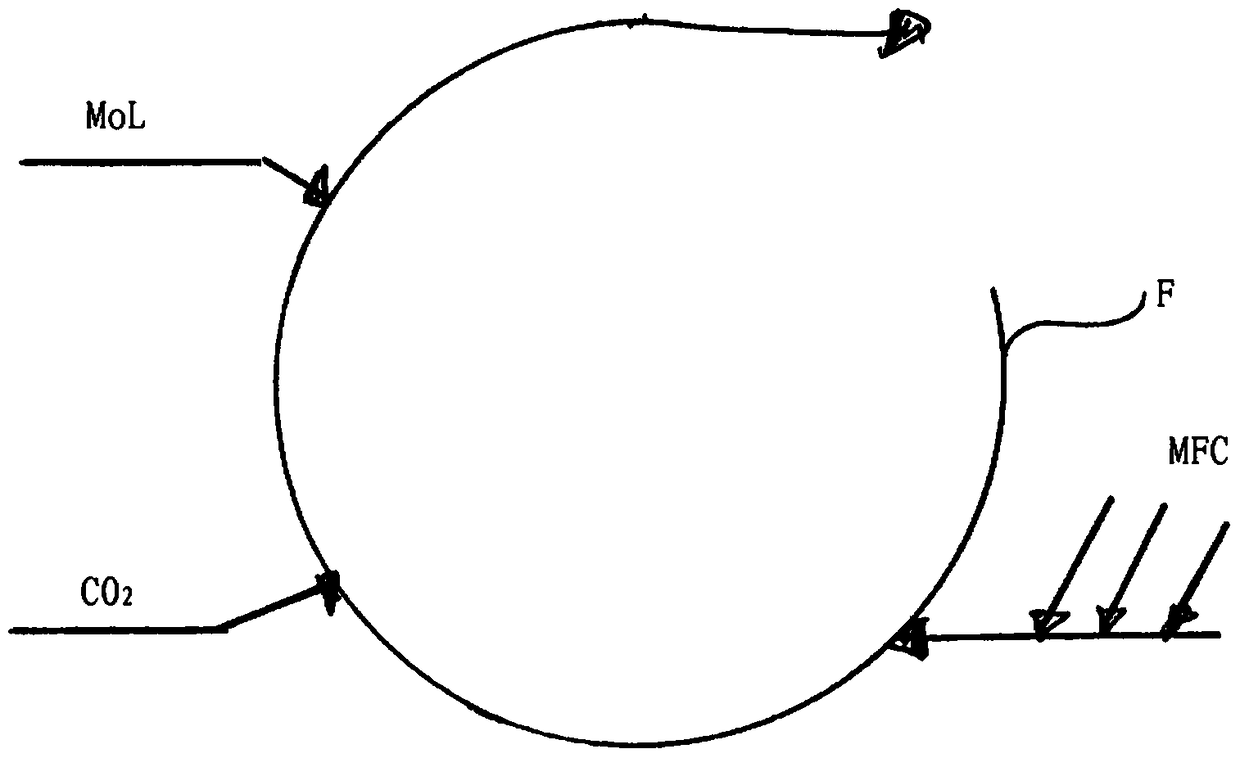In-line production method for papermaking process
A production method and additive technology, applied in papermaking, textiles and papermaking, paper, etc., can solve the problems of reduced tensile strength and tensile stiffness, poor retention, and increased wear of paper, and improve whiteness and printability. , Control the effect of drying shrinkage
- Summary
- Abstract
- Description
- Claims
- Application Information
AI Technical Summary
Problems solved by technology
Method used
Image
Examples
Embodiment
[0085] Trials were carried out in a pilot paper machine. The objective of this test is to simulate the face ply of multi-ply paperboard.
[0086] Supplies are 100% bleached birch wood refined to 26SR grade. The running speed was 80m / min and the grammage was 65gsm. Conventional paper chemicals used in board production, such as retention chemicals, hydrophobic sizing agents, etc., are used. These parameters were kept constant during the experiment.
[0087] Table 1 below shows an overview of how the test was performed and the chemicals used therein.
[0088] The addition of CMC (carboxymethyl cellulose) was not necessary, however, a slight improvement in strength could be noticed. However, CMC had no adverse effect on thread retention and brightness.
[0089] Starch is usually added as it imparts some strength without major adverse effects.
[0090] In Example 1, the mixing of MFC and starch into milk of lime was carried out and its ingredients were added or introduced int...
Embodiment 2
[0099] Example 2 shows that if the addition of MFC and starch substitute is compounded into a thick stock, much higher amounts are required for the same strength level and high porosity is lost. A Gurley hill porosity of 31 s / 100ml indicates the low porosity of the paper layer.
PUM
| Property | Measurement | Unit |
|---|---|---|
| diameter | aaaaa | aaaaa |
Abstract
Description
Claims
Application Information
 Login to View More
Login to View More - R&D
- Intellectual Property
- Life Sciences
- Materials
- Tech Scout
- Unparalleled Data Quality
- Higher Quality Content
- 60% Fewer Hallucinations
Browse by: Latest US Patents, China's latest patents, Technical Efficacy Thesaurus, Application Domain, Technology Topic, Popular Technical Reports.
© 2025 PatSnap. All rights reserved.Legal|Privacy policy|Modern Slavery Act Transparency Statement|Sitemap|About US| Contact US: help@patsnap.com



